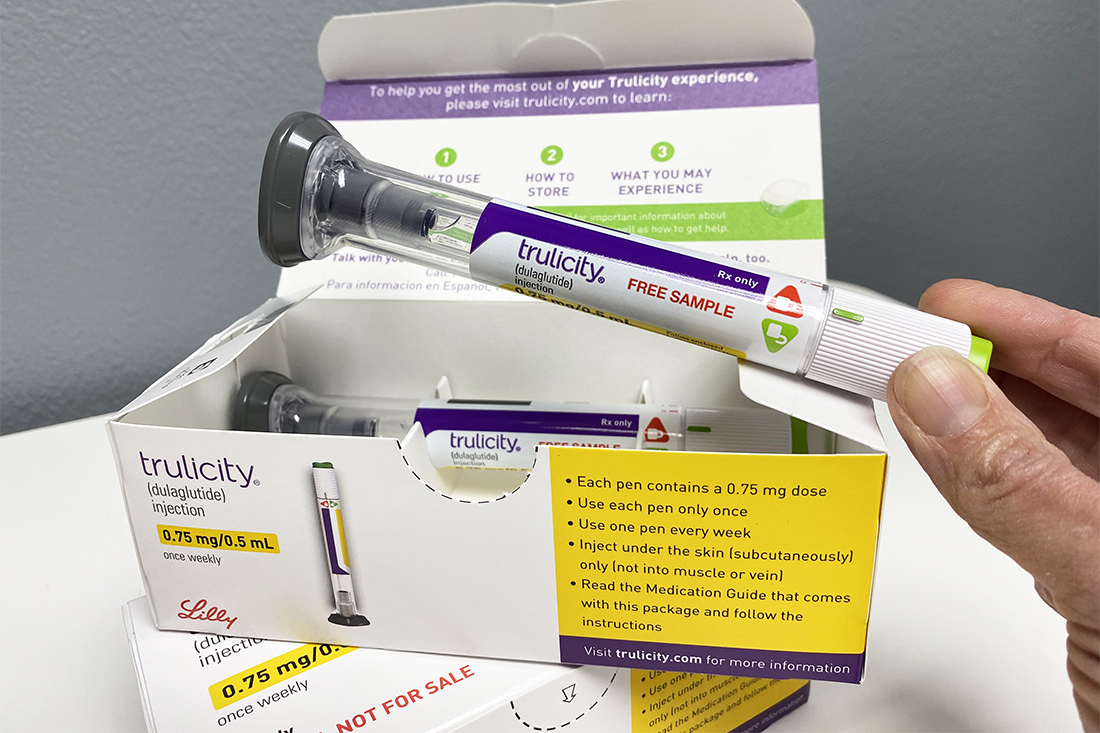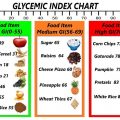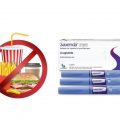Trulicity, the brand name for dulaglutide, is a medication classified as a glucagon-like peptide-1 (GLP-1) receptor agonist. It is primarily prescribed for the management of type 2 diabetes, a chronic condition characterized by insulin resistance and impaired insulin secretion. Trulicity has gained popularity as an effective tool in helping individuals control their blood sugar levels and improve overall glycemic control.
Clinical studies have demonstrated the efficacy of Trulicity in reducing both fasting and postprandial (after-meal) blood sugar levels. Beyond its primary role in glycemic control, Trulicity has shown additional benefits, including modest weight loss in some individuals. This weight loss effect is particularly advantageous for patients with type 2 diabetes who may also struggle with obesity.
Mechanism of Action
Trulicity exerts its therapeutic effects by mimicking the action of a naturally occurring hormone called glucagon-like peptide-1 (GLP-1). GLP-1 is released from the intestines in response to food intake and plays a crucial role in regulating blood sugar levels. However, in individuals with type 2 diabetes, the function of GLP-1 is often impaired. Trulicity steps in to fill this gap.
Upon administration, Trulicity binds to and activates the GLP-1 receptors on the surface of pancreatic beta cells. This activation stimulates the release of insulin, a hormone responsible for facilitating the uptake of glucose by cells, particularly muscle and fat cells. Increased insulin levels help lower blood sugar levels by promoting the utilization of glucose for energy.
Furthermore, Trulicity slows down the rate at which the stomach empties its contents into the small intestine. This delay in gastric emptying reduces the post-meal rise in blood glucose levels, providing a more controlled and gradual release of glucose into the bloodstream. The combined effects of increased insulin secretion and delayed gastric emptying contribute to improved glycemic control in individuals with type 2 diabetes.
In addition to its effects on insulin and gastric emptying, Trulicity also suppresses the release of glucagon, a hormone that raises blood sugar levels. By inhibiting glucagon secretion, Trulicity further contributes to the regulation of glucose metabolism.
Administration and Dosage
Trulicity is typically administered once a week via subcutaneous injection, commonly in the abdomen or thigh. The extended-release formulation allows for a sustained release of the medication over the course of a week, reducing the frequency of injections and enhancing patient compliance.
The dosage of Trulicity may vary depending on individual factors such as the patient’s response to the medication, other concurrent treatments, and overall health status. Healthcare providers carefully tailor the dosage to meet the specific needs of each patient, aiming to achieve optimal glycemic control while minimizing side effects.
Foods to Avoid with Trulicity
While Trulicity can be an effective tool in managing diabetes, it’s crucial for individuals taking this medication to be mindful of their diet to maximize its benefits. Certain foods can interact with Trulicity, potentially affecting its efficacy or causing undesirable side effects. In this section of the article, we will explore a list of foods to avoid when using Trulicity.
- Highly Processed Foods: Processed foods are often high in refined sugars, unhealthy fats, and additives. Consuming these can lead to rapid spikes in blood sugar levels, counteracting the effects of Trulicity. It’s advisable to steer clear of items such as sugary snacks, instant meals, and heavily processed convenience foods.
- High-Glycemic Carbohydrates: Foods with a high glycemic index can cause rapid increases in blood sugar levels. This includes white bread, white rice, and sugary cereals. Opt for whole grains and complex carbohydrates instead, as they release glucose more slowly, providing a steadier energy source.
- Sugary Beverages: Sodas, fruit juices, and other sugary beverages can significantly impact blood sugar levels. These drinks can interfere with Trulicity’s ability to regulate glucose, so it’s best to opt for water, herbal teas, or sugar-free alternatives.
- High-Fat Foods: While some fats are essential for a balanced diet, excessive consumption of high-fat foods can lead to weight gain and insulin resistance. Foods rich in saturated fats, such as fried foods and fatty cuts of meat, should be consumed in moderation.
- Alcohol: Consuming alcohol in excess can affect blood sugar levels and increase the risk of hypoglycemia. It’s essential to moderate alcohol intake and be aware of its potential impact when using Trulicity.
- Large Meals: Eating large meals can lead to spikes in blood sugar levels. Instead of consuming three large meals, consider smaller, more frequent meals throughout the day. This can help maintain stable blood sugar levels and complement the effects of Trulicity.
- Inconsistent Meal Timing: Maintaining a consistent meal schedule is crucial for individuals using Trulicity. Skipping meals or eating irregularly can disrupt the medication’s effectiveness in managing blood sugar.
- High-Sodium Foods: High-sodium foods, such as processed snacks and canned goods, can contribute to high blood pressure. Managing sodium intake is important for overall cardiovascular health, especially for individuals with diabetes.
Conclusion
Effectively managing type 2 diabetes requires a holistic approach that includes medication, lifestyle modifications, and a balanced diet. While Trulicity can be a valuable tool in controlling blood sugar levels, paying attention to the foods you consume is equally important. Consult with your healthcare provider or a registered dietitian to create a personalized diet plan that complements your Trulicity medication and supports your overall health and well-being. By making informed dietary choices, individuals can optimize the benefits of Trulicity and better manage their diabetes.





